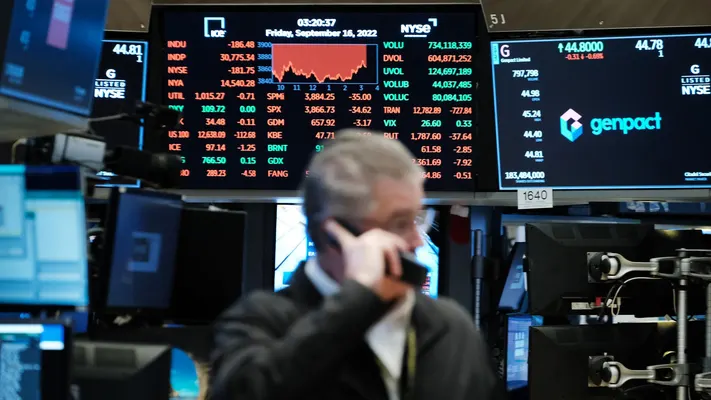
- Indices
- Stocks
Inflation shakes Wall Street stocks
Do you want to know how to make money from this?
Register for free and get expert advice, access to a training course and webinars.
Key points:
- Major Wall Street indices (Dow Jones, S&P 500, Nasdaq) closed lower despite previous record highs.
- The U.S. Consumer Price Index (CPI) exceeded forecasts, signaling increasing inflationary pressures.
- Oil prices rose due to supply concerns and increased demand following Hurricane Milton in the U.S.
By the end of Thursday’s trading, the major Wall Street stock indices showed negative movement. Investors reacted negatively to the release of inflation data, which exceeded consensus forecasts, as well as an increase in jobless claims. These indicators reflect the current state of the U.S. economy and could signal a shift in monetary policy.
The Dow Jones Industrial Average fell by 57.88 points, or 0.14%, to 42,454.12, the S&P 500 lost 11.99 points, or 0.21%, to 5,780.05, and the Nasdaq Composite dropped 9.57 points, or 0.05%, to 18,282.05.
CPI exceeds expectations
The U.S. Consumer Price Index (CPI) showed higher-than-expected growth in September, sparking disagreements among investors regarding the Federal Reserve’s monetary policy outlook.
According to data released on Thursday, the CPI, a key inflation indicator, rose by 0.2% month-on-month and by 2.4% year-on-year. Moreover, the core CPI, which excludes volatile food and energy prices, also exceeded forecasts, showing a 3.3% year-on-year increase.
At the same time, initial jobless claims rose to 258,000, indicating some tension in the labor market.
These mixed data elicited varied reactions from market participants. On one hand, higher inflation could push the Federal Reserve to continue tightening monetary policy. On the other hand, the rise in jobless claims signals a potential slowdown in economic activity, which might require lowering interest rates.
Opinions within the Federal Reserve remain divided. Raphael Bostic, President of the Atlanta Federal Reserve, supported maintaining current interest rates, citing recent volatility in macroeconomic indicators. Meanwhile, other top officials, such as Chicago Fed President Austan Goolsbee and New York Fed President John Williams, are open to the possibility of future rate cuts.
Markets have already priced in a high probability of a 25 basis point rate cut at the Fed’s November meeting. However, given the conflicting signals from the economy, the final decision will depend on further macroeconomic data.
Hurricane Milton drives up energy prices
The U.S. stock market showed mixed performance during Thursday’s session. Although the S&P 500 and Dow Jones Industrial Average reached new all-time highs the previous day, Thursday’s movement was more subdued.
Out of the 11 major sectors of the S&P 500, only three ended the day with gains. The energy sector led the way, up 0.8%. Energy company stocks rose due to an increase in oil prices, which were driven by concerns over supply disruptions in the Middle East and rising fuel demand in the U.S. ahead of Hurricane Milton, which hit the west coast of Florida.
Investors are also preparing for the start of the third-quarter earnings season. Earnings for companies in the S&P 500 are expected to grow by 5% year-on-year. On Friday, the largest banks will release their financial results.
Amid these events, stock prices for various companies showed mixed dynamics. Shares of Delta Air Lines fell 1% after the company provided a revenue forecast below analysts’ expectations. Other airlines also faced pressure.
Pfizer’s stock dropped 2.8%, with the decline attributed to former company executives opposing activist investor Starboard Value’s demands.
Do you want to know
How to make money from the news
Register for free and get:
- Expert consultation;
- Access to the training course;
- Opportunity to participate in webinars

